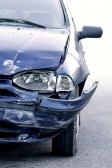Whiplash – A Full Body Disorder
 Whiplash injuries are notorious for causing disability and pain beyond the neck. Whiplash, considered a full body disorder, has symptoms that can range from pain to dizziness, headache and fatigue. Depending on the type of collision and restraints, other body parts may be injured as well. Since whiplash is used to describe both the “mechanism of injury” – (what happened to the body) and the injury itself, it gets a little confusing for the injured person when talking about it all. What isn’t confusing though, is how often people in our Minneapolis/St Paul Chiropractic office report that they “Just hurt all over”. Here’s why:
Whiplash injuries are notorious for causing disability and pain beyond the neck. Whiplash, considered a full body disorder, has symptoms that can range from pain to dizziness, headache and fatigue. Depending on the type of collision and restraints, other body parts may be injured as well. Since whiplash is used to describe both the “mechanism of injury” – (what happened to the body) and the injury itself, it gets a little confusing for the injured person when talking about it all. What isn’t confusing though, is how often people in our Minneapolis/St Paul Chiropractic office report that they “Just hurt all over”. Here’s why:
- On impact the whole neck and back went through a forced-type of “wave” action
- The speed of the event created “deeper injury”
- Arms and legs naturally and protectively braced
- Pain symptoms that resulted came from both direct (exactly the spot that got injured) and referred (coming from other places) sources
Independent engineering studies have shown that when the body is forcibly “jerked” forwards and backwards from the impact of an auto accident, a wave-like action is transmitted along the whole spine – from the neck all the way down through the low back and pelvic/hip areas. The normal spine has forward curves in the neck and low back, and backward ones in the mid back and pelvis. When stacked on top of one another you basically have a bit of a stretched out spring, designed to be a shock absorber. During this type of injury the curves are accentuated and even reversed, creating momentary “S”- like shapes as the force is transmitted along. These forced shapes can linger, and be seen on examination and X-ray as reduced, straightened and even reversed spinal curves, making it virtually impossible for that area to move or work normally, or as before. If left that way, even without pain, the current and future state of affairs will be that abnormal weight will be carried on the joints, and the discs between the bones. This virtually guarantees future problems, including degenerative arthritis. And remember!…this was all “forced” on the body. It wasn’t voluntary so not surprisingly muscles, ligaments, tendons, nerves, discs and a whole host of other tissues get stretched and/or torn. This occurs even just microscopically, and even in very low impact accidents like fender benders.
Speeds of forces transmitted through impacting cars, that in turn transmit those forces through the bodies operating or riding in them, are measured in microseconds. The neck and back muscles can’t tighten fast enough for any sort of protection, so the “deeper” structures like ligaments and discs between the bones take the brunt of it. The ligaments are holding things together and “in place”, and the discs which are shock absorbing pads, are helping with normal movement and cushioning. Both don’t have as good a blood supply (very important for healing) as muscles, so when injured tend to heal more slowly. Often when there’s been a delayed or slow onset of pain, it means that these more “difficult” and deeper tissues were injured, because their lack of so-called “good” blood supply also delayed how fast they became inflamed following the injury. When inflammation or swelling occurs, which it always does with an injury like whiplash, it is as capable of producing pain symptoms as are the injured discs and ligaments.
through the bodies operating or riding in them, are measured in microseconds. The neck and back muscles can’t tighten fast enough for any sort of protection, so the “deeper” structures like ligaments and discs between the bones take the brunt of it. The ligaments are holding things together and “in place”, and the discs which are shock absorbing pads, are helping with normal movement and cushioning. Both don’t have as good a blood supply (very important for healing) as muscles, so when injured tend to heal more slowly. Often when there’s been a delayed or slow onset of pain, it means that these more “difficult” and deeper tissues were injured, because their lack of so-called “good” blood supply also delayed how fast they became inflamed following the injury. When inflammation or swelling occurs, which it always does with an injury like whiplash, it is as capable of producing pain symptoms as are the injured discs and ligaments.
Unfortunately, the very same defenses used to protect us during whiplash impacts cause more injuries, and in more places. Arms used for bracing tend to create injuries involving the hands, wrists, elbows and shoulders. Again, forces transmitted through the body, and now trying to be stopped by an outstretched or bent arm with the weight of the body exerted on it too, creates joint injury, and a variety of tissue stretches and tears. The same is true of feet and legs bracing against the floorboard or gas/brake pedals. The result here is injury involving the feet, ankles, knees, legs and hips. “Bracing” supplied by harness seatbelts lends itself to shoulder and rib injuries, and airbags to head, chest and stomach ones. Though this author wouldn’t advise against using most any means to protect oneself in an auto accident, there are downsides to any of these “defensive aids and postures”. Lately, authoritative sources have advised that it would be better to kind of “let go”, or basically don’t tighten up or brace hard with arms and legs. Easier said than done!
Pain is a complicated subject. An example of a direct source of pain is striking an elbow on a hard surface. We know what got struck, and it hurts right there. Whipping the neck and back around from a car accident is different. Certain spots might hurt, and turn out to be THE spots that got injured. If we hurt a spine nerve though, we could get pain anywhere that nerve travels, and anywhere along that nerve. If a muscle got hurt, and it connects from the neck to the shoulder, we could get pain at the neck, or the shoulder, or anywhere in between. Painful knots that develop in muscle after injury called “Trigger Points”, can produce pain in areas that are not even in that muscle. Ligaments and discs, the so-called “deeper” structures produce vague, deep and spread out pain patterns that are hard to pinpoint when they get hurt. And, whiplashes typically produce combinations of all of these problems, so there is overlap and intertwining of the symptoms. These are combined with inflammation or swelling that accompanies the injuries. This has acids in it, and this irritates nerves, causing pain and other symptoms. All in all the nervous system has taken a “hit”, like throwing a chair into a complicated electrical switchboard.
Whiplash then, turns out to be a pretty complicated set of injuries, commonly capable of producing a wide range of pain and other symptoms, and in many body parts not often thought of as “Whiplash”. And of course there is the “Silent Whiplash” – the very real injury that is not producing any active symptoms – at least at the moment! Instead the parts aren’t working normally, even subtly so, and little by little the wear and tear from them (joints, discs, muscles, etc.) not meshing well or running smoothly breaks them down, changes them into arthritic situations, and produces a permanent situation. Due to the complex nature of all this, whenever you’re involved in a car or other motor vehicle accident, seek out health care professionals skilled in the care and evaluation of auto accident injuries.
By Dr. William T. Norlin Chiropractor in Minneapolis/St Paul, Minnesota











